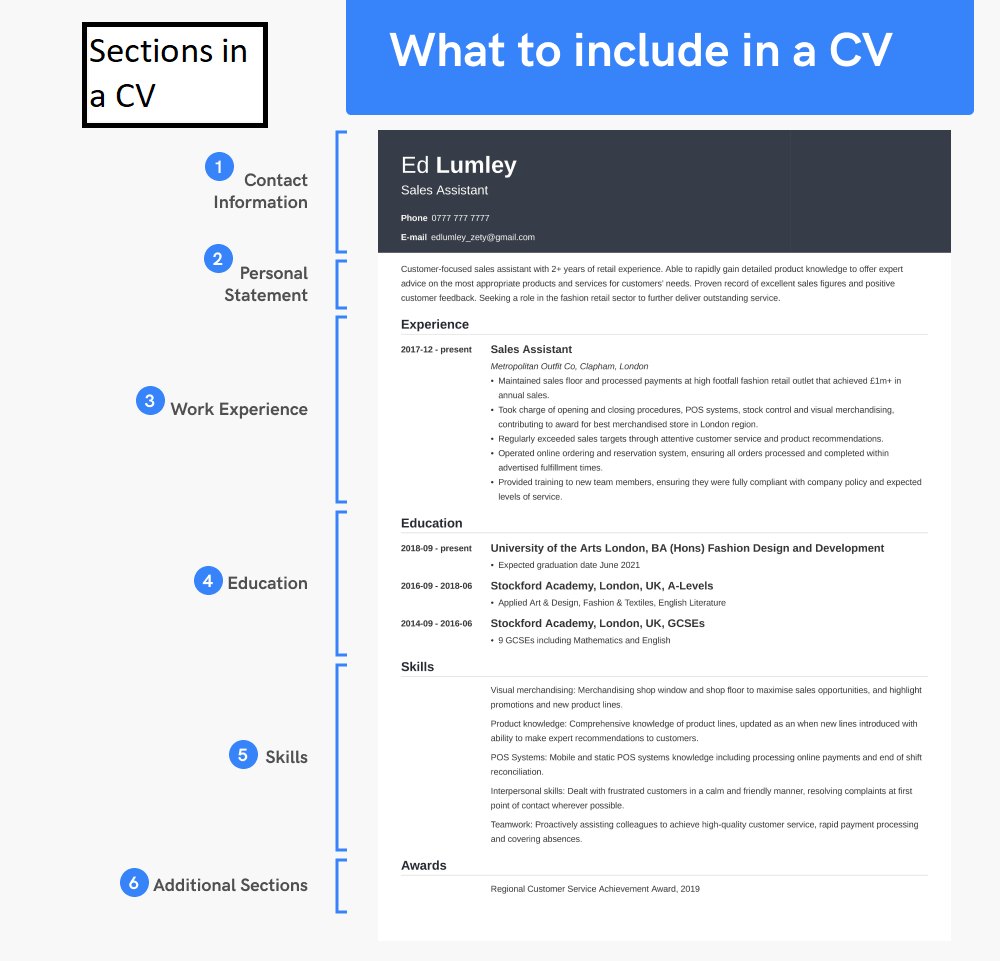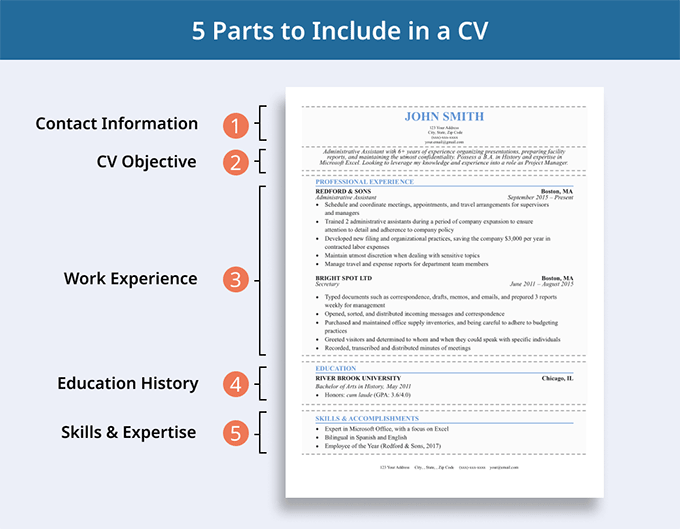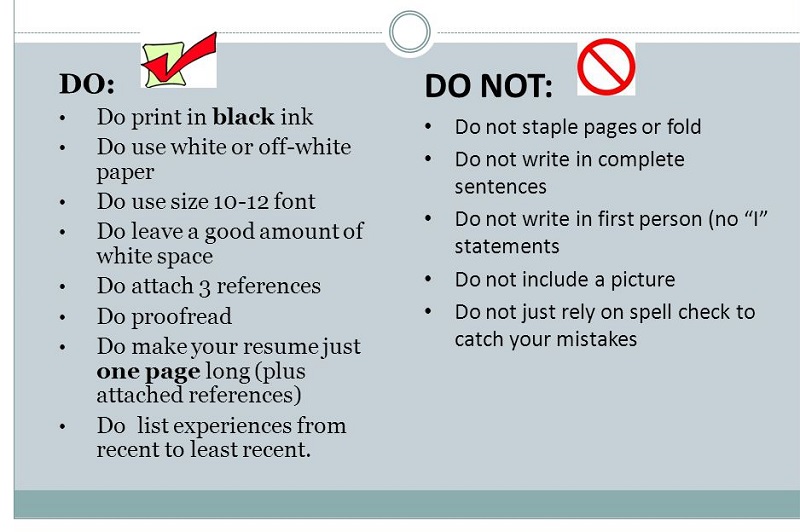What is the first thing needed or demanded when you are applying for a job? Depending on what location you reside in and your field of job the answer is – CV. Before digging into anything you should know the sections to include in a CV.
Curate yourself an appealing CV (Curriculum Vitae) so you could get a step closer to being finalized for an interview call.
Over the years things have changed drastically in all fields. So is in the recruitment and hiring industry.
No one appreciates a plan CV anymore.
Yes, you heard it right.
This article will guide you through the essential elements what to include in a CV in 2023 to make it noteworthy and increase your chances of standing out from the crowd.
Sections in a CV
A CV typically includes several sections that provide relevant information about your background and qualifications. These sections usually consist of personal information, a professional summary or objective statement, work experience, education, skills, and certifications. Each section plays a vital role in presenting your suitability for a specific role.

Formatting Tips
- To make your CV visually appealing and easy to read, it’s important to follow certain formatting tips. First, choose a clean and professional font such as Arial or Calibri. This ensures that your CV looks polished and is easily legible. Additionally, using appropriate headings and subheadings for each section helps organize the content and allows employers to quickly navigate through your CV.
- Maintaining consistency in formatting is crucial. Use consistent font sizes, spacing, and alignment throughout the document. This creates a cohesive and professional appearance. Highlight relevant information by using bold or italic formatting sparingly. This draws attention to key achievements, qualifications, or skills that are relevant to the position you’re applying for.
- Using bullet points is highly recommended to present information in a concise and scannable manner. Bullet points help break down content into easily digestible chunks, making it easier for employers to grasp your qualifications quickly. Pay attention to spacing and alignment to ensure your CV appears well-organized and visually balanced. Proofread your CV thoroughly to eliminate any spelling or grammatical errors that may undermine your credibility.
- Tailor the format of your CV to your industry. Different industries may have specific preferences for CV formats. For example, a creative field might appreciate a more visually appealing and design-oriented CV, while a traditional industry may prefer a more conservative and straightforward format. Research industry standards to ensure your CV aligns with the expectations of your target employers.
ATS-Friendly Formatting

Many employers utilize Applicant Tracking Systems (ATS) to scan and filter CVs before human recruiters review them. To improve your CV’s chances of passing through ATS, consider these formatting tips.
Keep the layout simple by avoiding complex designs, graphics, and tables that might confuse the scanning software. Instead, opt for a straightforward format with clear headings and subheadings to ensure easy parsing and comprehension by the ATS.
Including relevant industry keywords in your CV is crucial for ATS optimization. Analyze the job description and identify commonly used keywords.
Incorporate these keywords naturally throughout your CV, especially in the skills and work experience sections. However, be cautious of excessive keyword stuffing, as it can negatively impact readability and human evaluation.
Save your CV in a standard file format like PDF or Word to ensure compatibility across different systems and minimize formatting issues.
Before submission, proofread your CV for readability, ensuring consistent font, spacing, alignment, and no formatting glitches.
Optimizing the file size of your CV is also important, particularly for online submissions. Compress images and remove unnecessary elements to significantly reduce the file size without compromising quality. This facilitates easy uploading and sharing of your CV with potential employers.
Online CV Formatting
In today’s digital age, many job applications are submitted online or through email. It’s important to format your CV in a way that is optimized for online viewing.

Consider the following tips:
- Use an appropriate template: Online platforms and job search websites often provide templates specifically designed for CVs. Choose a template that suits your industry and personal style while maintaining a professional appearance.
- Optimize for mobile devices: With the increasing use of smartphones and tablets, it’s crucial to ensure that your CV is mobile-friendly. Use a responsive design that adapts to different screen sizes, making it easy for employers to view your CV on any device.
- Include links to online profiles: If you have professional profiles on platforms like LinkedIn or personal websites that showcase your work, include these links in your CV. This allows employers to access additional information about your qualifications and achievements.
What Sections to include in a CV
To create an impressive CV, it’s important to structure it in a clear and organized manner. You should be aware of the things to include in the CV.

The following sections are considered essential in a CV:
Personal Information and Contact Details
At the top of your CV, provide your full name, professional title, and contact details. Include your phone number, email address, and LinkedIn profile URL if applicable. Ensure that this information is accurate and up to date.
Professional Summary
A concise and impactful professional summary follows your contact details. This section should provide a brief overview of your career goals, key skills, and relevant experience. Tailor your professional summary to align with the specific job you’re applying for.
Work Experience
The work experience section showcases your professional track record. Start with your most recent role and work backward chronologically. Include the job title, company name, dates of employment, and a description of your responsibilities and achievements in each position. Highlight your key contributions and quantify results where possible.
Education and Qualifications
List your educational background and any relevant qualifications or certifications. Include the names of the institutions, the degrees or diplomas earned, and the dates of completion. If you recently graduated, you can mention relevant coursework or projects.
Skills and Competencies
Demonstrate your skills and competencies that are directly relevant to the job you’re applying for. Create a dedicated section where you can highlight your technical skills, software proficiencies, language abilities, and other strengths that set you apart from other candidates. Use bullet points to make this information easily scannable.
Achievements and Awards
If you have received any significant achievements, accolades, or awards throughout your career, showcase them in this section. These accomplishments can help you stand out and demonstrate your capabilities to potential employers.
Additional Information
Include any additional information that may be relevant to the job or industry you are targeting. This could include professional memberships, volunteering experience, publications, or relevant hobbies. Be selective and include only information that enhances your qualifications.
References
It is common practice to provide references upon request. Include a statement at the end of your CV stating that references are available and provide the contact information of two or three individuals who can vouch for your qualifications and work ethic.
What Not to Include in a CV
While it’s important to know what to include, it’s equally important to understand what not to include in your CV. Here are a few things to avoid:

- Personal Details: Avoid including personal information such as your date of birth, marital status, or religious beliefs. These details are irrelevant to your professional qualifications and may lead to bias.
- Irrelevant Work Experience: Exclude work experience that is not relevant to the job you’re applying for. Focus on showcasing experiences that align with the desired position.
- Unprofessional Email Address: Ensure that your email address is professional and appropriate. Avoid using nicknames, slang, or unprofessional words in your email address.
- Unrelated Hobbies: Unless your hobbies directly relate to the job or demonstrate relevant skills, it’s best to omit them from your CV.
- References Included: Do not list your references directly on your CV. Instead, state that references are available upon request.
Final Thoughts!
Crafting a noteworthy CV requires careful attention to detail and a clear understanding of what employers are looking for.
Including the essential sections discussed in this article and avoiding unnecessary information, you can create a compelling CV that effectively highlights your qualifications and increases your chances of securing your desired job.
Remember to tailor your CV to each job application, emphasizing the most relevant skills and experiences. Good luck with your job search!


